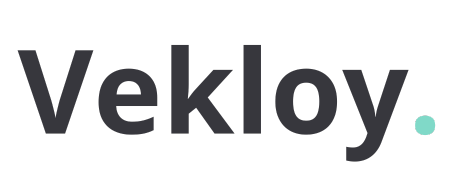Custom App Development vs. White-Label Solutions: What’s Right for Your Business

In today’s digital-first market, mobile and web applications help businesses deliver value, connect with customers, and stay ahead of the curve. The question many companies face is whether to invest in custom app development or adopt a white-label solution. Each route offers benefits and challenges. The right choice depends on budget, goals, timelines, and how much control you want over the final product.
This article compares both options across key factors, helping you figure out which path fits your business best.
What Is Custom App Development?
Custom app development means building an application from the ground up based on your specific requirements. You work with a development team to define the features, interface, workflows, integrations, and security standards.
Every detail—from the user interface to backend logic—is tailored to match your needs. This level of control supports unique business processes and niche markets where off-the-shelf apps don’t cut it.
What Are White-Label Solutions?
White-label solutions are pre-built apps developed by third parties. Businesses can brand these apps as their own and offer them to customers. You don’t control the core codebase, but you can often change the logo, theme colors, and sometimes minor features.
These solutions reduce the time to market, especially for startups or service providers who need a working product quickly. Industries like food delivery, fitness, ride-sharing, and digital payments often use white-label apps to enter the market faster.
Key Comparisons Between Custom and White-Label
Let’s break down the major differences across common business considerations.
1. Time to Launch
White-Label:
Speed is one of the biggest draws here. You can launch your app in days or weeks, depending on how much branding and configuration is needed. The platform is already built, tested, and often deployed on cloud infrastructure. Combined with white label app marketing, you can also rapidly promote and position your app in target markets.
Custom:
Expect a longer timeline—often three to twelve months. Custom development requires planning, wireframes, coding, testing, and feedback loops. Launch schedules depend on team size, budget, and project scope.
Winner: White-label — when you need speed.
2. Initial Cost
White-Label:
Upfront costs are lower. You usually pay a setup fee, followed by a subscription or licensing model. Pricing is often transparent and predictable, making it easier for small businesses to budget.
Custom:
Custom apps cost more to build. You’ll pay for designers, developers, project managers, QA testers, and possibly legal or compliance advisors. Costs can range from $20,000 to $300,000+, depending on complexity.
Winner: White-label — for tighter budgets or when bootstrapping.
3. Long-Term Cost and Ownership
White-Label:
You never own the code. You’re paying to use someone else’s system. If you want to add major features or move to another platform, your options are limited. Subscription fees can add up over time.
Custom:
You own the code, the product, and the roadmap. You’re in full control. There are no ongoing licensing fees unless you host it on third-party infrastructure. Maintenance and upgrades are your responsibility.
Winner: Custom — for long-term control and investment.
4. Feature Flexibility
White-Label:
What you see is what you get. Some vendors allow add-ons or API integrations, but major changes usually aren’t possible. This can limit how well the app serves your unique customer base or workflow.
Custom:
You can build exactly what you need. Want AI-driven recommendations? Done. Need custom workflows, CRM integration, or industry-specific compliance tools? It’s all possible.
Winner: Custom — if your feature list is specific or complex.
5. Scalability
White-Label:
Scaling can be tricky. You depend on the vendor’s infrastructure and product decisions. If their backend can’t support your user growth or lacks support for advanced features, your hands are tied.
Custom:
Custom apps scale with your business. You decide how much traffic to support, which regions to target, and how to architect the system for growth.
Winner: Custom — for long-term scaling needs.
6. Brand Identity and Differentiation
White-Label:
These solutions often look similar to others using the same base product. While you can add your logo and adjust colors, it’s hard to stand out in a crowded market.
Custom:
You control every pixel. Your app reflects your brand voice, design language, and user experience. A unique interface or novel user interaction can leave a lasting impression.
Winner: Custom — if branding and differentiation matter.
7. Security and Compliance
White-Label:
Security depends on the provider. If they follow best practices, you benefit. But you rarely have insight into the underlying architecture. If you operate in regulated industries (like fintech or healthcare), this lack of control may raise red flags.
Custom:
You set the standards. From encryption to data policies, everything aligns with your compliance needs. You can build custom security layers for users, payments, or third-party integrations.
Winner: Custom — when data privacy and security are key.
8. Maintenance and Support
White-Label:
Support is included. The vendor handles bug fixes, platform updates, and backend maintenance. You get peace of mind without managing a dev team.
Custom:
You must plan for post-launch updates, bug fixes, server monitoring, and support tickets. Either hire in-house or keep an agency on retainer.
Winner: White-label — for hands-off maintenance.
9. Innovation and Roadmap Control
White-Label:
Your app evolves based on the vendor’s roadmap. If they release new features, you may benefit. But you don’t control priorities or timelines.
Custom:
You decide the pace. You can respond to user feedback, market trends, or business shifts immediately.
Winner: Custom — for agile product strategy.
Real-World Examples
These real-world cases show how different business goals align with either custom development or white-label solutions.
A. Startup Launching a Marketplace App
A startup wants to connect local freelancers with businesses. Their priority is to test the idea quickly and spend minimally. A white-label app offers a ready-made platform to validate the concept without burning through cash.
After 6–12 months, if traction grows and users request features not supported by the platform, the team can switch to a custom build.
B. Bank Releasing a Mobile Wallet
A financial institution must meet strict security standards, work with internal systems, and provide a branded experience. A custom app makes sense. It lets them tailor features for customers, build trust, and meet legal requirements across regions.
C. Fitness Coach Building a Subscription Platform
An independent trainer wants to offer workouts, meal plans, and video coaching. A white-label fitness app saves time and effort. The trainer can go live in weeks and focus on content rather than tech.
Pros and Cons at a Glance
| Criteria | Custom App | White-Label Solution |
|---|---|---|
| Time to Launch | Slow (months) | Fast (days/weeks) |
| Upfront Cost | High | Low |
| Ownership | Full | None |
| Scalability | Full control | Limited by vendor |
| Feature Control | Total flexibility | Mostly fixed |
| Maintenance | Your responsibility | Vendor managed |
| Security | Custom standards | Based on vendor |
| Support | Build your own or outsource | Included |
| Brand Control | Fully custom | Basic theming |
| Best For | Long-term growth, control | Quick launch, MVPs, testing |
When to Choose Custom App Development
-
Your business model requires unique features.
-
You aim to scale with full control over infrastructure.
-
Security, data protection, or compliance rules are strict.
-
You want to build long-term digital assets that add value.
-
Brand identity plays a key role in market positioning.
When to Choose a White-Label Solution
-
You need to launch quickly and keep costs low.
-
You’re validating a business idea or MVP.
-
Your users don’t need complex or custom features.
-
The vendor’s app fits your current needs with minor changes.
-
You lack a tech team or long-term development budget.
Final Thoughts
Both custom and white-label apps serve real business needs. The decision comes down to how fast you need to move, what you need to control, and how much you can invest. White-label solutions lower the barrier to entry, while custom development creates long-term leverage.
If your goal is speed, proof of concept, or testing product-market fit, white-label apps offer a quick path. If your goal is long-term growth, full control, and ownership, custom development brings the flexibility and power to build exactly what your business needs.
Pick the option that moves your business forward—not just today, but in the months and years ahead.
What's Your Reaction?































































